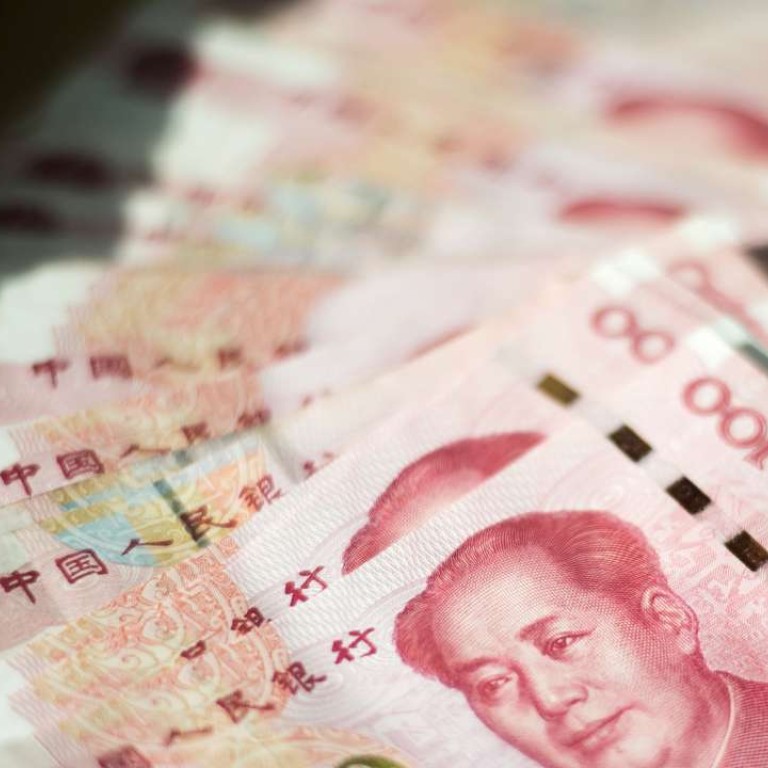
China’s yuan outflow pressure eases as dollar softens
Analysts predict another US$300 billion drop in China’s foreign exchange reserve in 2017
Capital outflow pressure has eased “remarkably” since the start of 2017, said the foreign exchange watchdog of China on Friday, even as analysts cautioned that the scale of yuan outflows this year might remain on par with levels in 2016.
Banks recorded net sales of US$19.2 billion worth of foreign currency in January, according to a statement issued by the State Administration of Foreign Exchange (SAFE) on Friday.
The deficit was down from December’s US$46.3 billion and November’s US$33.4 billion, indicating lessened appetite of swapping yuan for foreign currency in January.
SAFE said the pressure from capital outflows “has been remarkably alleviated since 2017”, as cross-border inflows and outflows were “becoming more balanced”.
“Despite external uncertainties, China’s sound economic fundamentals will determine stable cross-border capital flows in the medium and long run,” the statement said.
Analysts, however, said the slowdown in outflows was a result of the unexpected weakening of the US dollar, while a possible strengthening of the greenback in future and the policy reactions it may spark from the Chinese government will determine the outlook.
The yuan has gained 1.2 per cent against the dollar so far this year. It devalued 6.6 per cent in 2016, reflecting its worst annual drop since 1994.
“The weakened US dollar in January had discouraged exporters from holding US dollar revenue... while the outflow under service trade, mainly caused by dollar purchases for education and tourism purposes, also declined,” said Chen Long, China economist at Gavekal Dragonomics.
Chen said it was probable that China would see capital outflows in 2017 at around the levels of 2015 to 2016.
The central bank will tolerate a certain range of yuan deprecation to maintain the foreign reserve level, but when the outflows approach tolerable limits, more capital account restrictions would be installed, Chen said.
Chinese authorities have stepped up measures to stem outflows since late 2016. Among the measures,
the People’s Bank of China (PBOC) urged banks to strengthen scrutiny into overseas investment purposes by Chinese firms and asset acquirers.
Since early 2017, individual purchases of foreign currency, particularly for tourism purposes became more difficult due to tightened paperwork requirements.
On January 26, to increase capital inflow, SAFE issued a new rules designed to encourage companies to bring money borrowed offshore back onshore, which was previously difficult to do because of concerns about hot-money inflows.
The authority also asked companies to report how much revenue they earn overseas. Other pending changes include limits on how much money they can put in offshore accounts.
Chen said the policy would encourage exporters to convert a larger share of their dollar revenues into yuan, reducing the gap between the trade surplus and actual capital inflows, and also to keep their dollar revenue in onshore rather than offshore banks, which will cut down on “errors and omissions” in the balance of payments.
Analysts with UBS expected the yuan exchange rate and capital outflows to stay under pressure through 2017, despite tighter capital controls.
In a research note issued Friday they predict China’s foreign exchange reserve would fall to US$2.7 trillion by the end of 2017, a drop of US$300 billion for the year.
China’s foreign exchange reserve fell by US$320 billion in 2016, on top of a record US$513 billion decline in 2015.
The reserve was at US$2.998 trillion in January, after seven consecutive monthly declines since July.
Analysts from China International Capital Corporation (CICC) said in a recent note there was “limited room for further decline in China’s FX reserves”.
“China’s economic activities remained robust going into 2017, and the PBOC has been tapering its monetary easing. If the economic and policy setting becomes more stable and predictable, the large non-repatriated trade surplus will eventually return to China, bringing more foreign exchange inflows,” the note said.
When the US dollar is rising, exporters prefer to keep their overseas holdings in US dollars, instead of converting into yuan. This effectively converts a current account inflow into a capital account outflow.
Data on China’s foreign exchange reserves for February is due to be released in early March.
Analysts believe the forex reserve can drop further without sparking concern.
“The country’s liquid external assets continue to outsize its total external debt by a comfortable margin, and the current account remains in a surplus position,” said S&P Global Ratings’ sovereign credit analyst Kim Eng Tan.
CICC analysts wrote in their note, “based on our analysis, with the holdings above
US$2.6 trillion, the reserve adequacy will not constitute a threat to China’s external payment soundness .”

